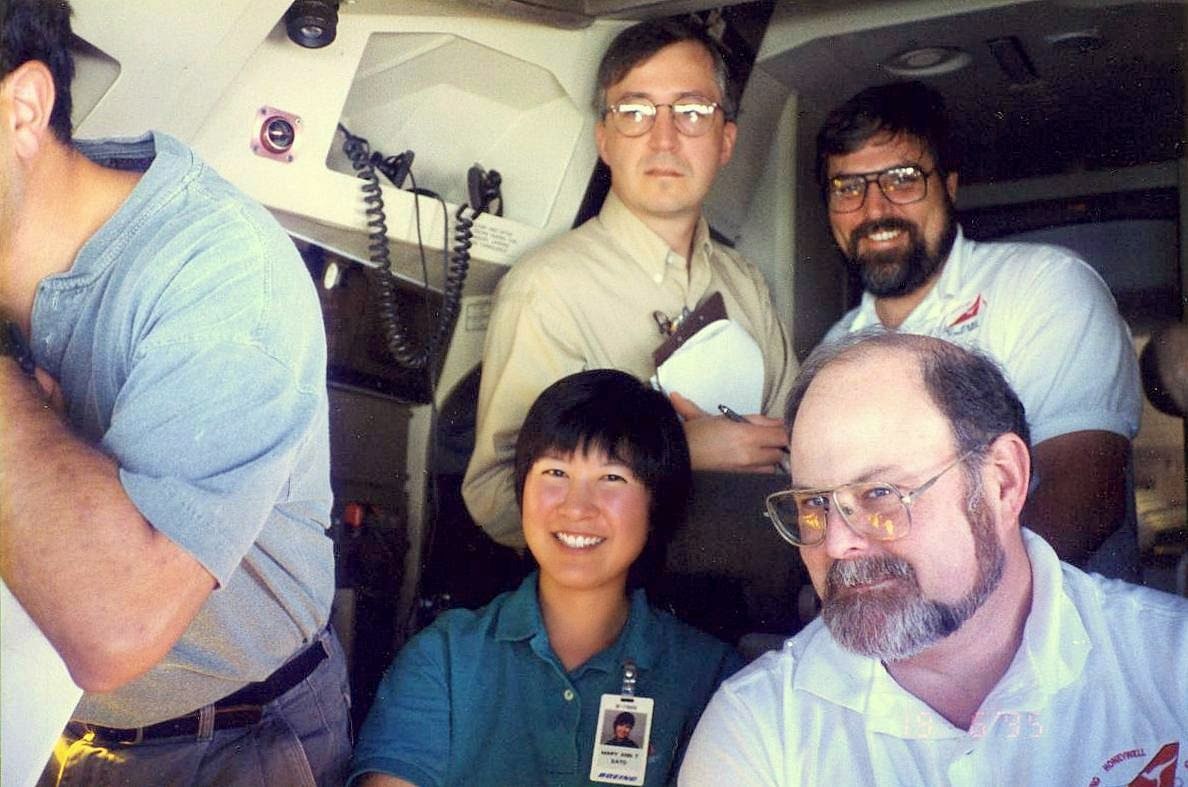I have a fondness for the 747-400.
I led TMF control law development - thrust management function. The challenge was to integrate what had been a 757/767 stand-alone computer system within the 747-400 Honeywell FMS in support of three new FADEC engines. My most memorable contribution was coming up with a new throttle rate limit that enabled maximum engine performance that was much simpler than an algorithm promoted by the propulsion group.
For a time I was lead for the last three engineers supporting the 747 Classic Autothrottle (FFRATS). I have great respect for those that wield a screwdriver. In that time, changes by keyboard (it's just software) were an advantage. It was a bit sad to be there when NWA took their last classic out of service in 2009.
The 747-400 was the first truly connected airplane and I was there to help make it happen. We had four ACARS suppliers and a new ARINC standard (724B) with MCDU. I was employee of the month when we got the last one certificated. ACARS was one aspect that supported two-crew flight operation.
I was supervisor for data recording and printers. This, along with central maintenance computer (CMC) fulfilled the objective of airplane health monitoring, which is ever expanding even today.
I picked up the first ARINC 741 satcom installation (Inmarsat with Collins) which initially only was useful with ACARS.
Later we added satellite voice. I led the industry committee (RTCA 165 WG5) to figure out how to integrate it into the flight deck and with ATC. We still have not tapped its utility fully.
A personal highlight was spending two months in New Zealand as field support to ANZ for their first 747-400 introduction. I took and passed the flight crew differences class. This gave me a far broader understanding of the airplane systems. As well, the many ride alongs.
I was the Boeing lead for data link and satcom in support of FANS-1 (Future Air Navigation System - notably with Controller/Pilot data link and automatic dependent surveillance (contract). Part of the effort was coming up with a new category of pilot alerting: Comm Messages. Another aspect was contriving a data link performance standard, which evolved into Required Communication Performance (RCP) - a tenant of Performance Based Communications System (PBCS). FANS-1 was a crowning achievement not just for the 747-400, but also for the marketplace. We have yet to fully realize its benefits as well.
I had the pleasure of being Supervisor to Sandy Urquhart, who earlier was lead on the development of a glass cockpit for a head-of-state 747-200, still in US service with the frequent call sign: Air Force One. That was quite a debacle, with the 747-400 disqualified from the competition because it was too new - yet the Air Force wanted all the features of the 747-400, making those airplanes entirely unique - the opposite of what had been intended by the rule.
By chance, I was onboard TransAero 747-8i on the Everett Flight Line, RC077, debugging an Inmarsat Satcom issue. The airplane was later sold to be the next Air Force One. I gather the program is going as well as the last one (schedule and cost overruns).
I participated in the Airborne Laser Project. We were tasked with specifying a commercial variant that would serve as the platform. My second Star Wars project (the first was 767 VA001 Airborne Optical Adjunct).
Since leaving Boeing, I participated in three memorable tests on 747:
1) I rented a KAL 747SP from Boeing Used Airplanes, that was in the desert, to test Iridium pagers.
2) I worked with Cathay Pacific to install a special satcom connector in the cabin of a 747-400 and demonstrated the first system for connecting passengers devices to retrieve their email on an in-service flight leg. Sadly, that trip was coupled with spending a night onboard the airplane while parked adjacent to the debris field from an SIA 747-400 that had crashed taking off from a closed runway in heavy rain.
3) I conducted cellular propagation measurements inside the cabin of a 747-400 that was parked for the winter in Hamburg.
I had the honor to conduct flights tests with Lew Wallick (747SP) and Jamie Loesch (747-400) chief pilots. I worked together with Tom Imrich (747-8 chief pilot) and Tom Twiggs (Boeing FANS project pilot) on the FANS project. Many other great 747 pilots, but probably the most fun I had was with Ray Heiniger and David Massy-Greene from QANTAS flying into Kai Tek, testing FANS on a 747-400 in-service leg from Sydney. I got to sit in the jump seat for the arrival!
Here is a short video I made back in 1990, on what was my most fun day ever.
Stay tuned!











No comments:
Post a Comment